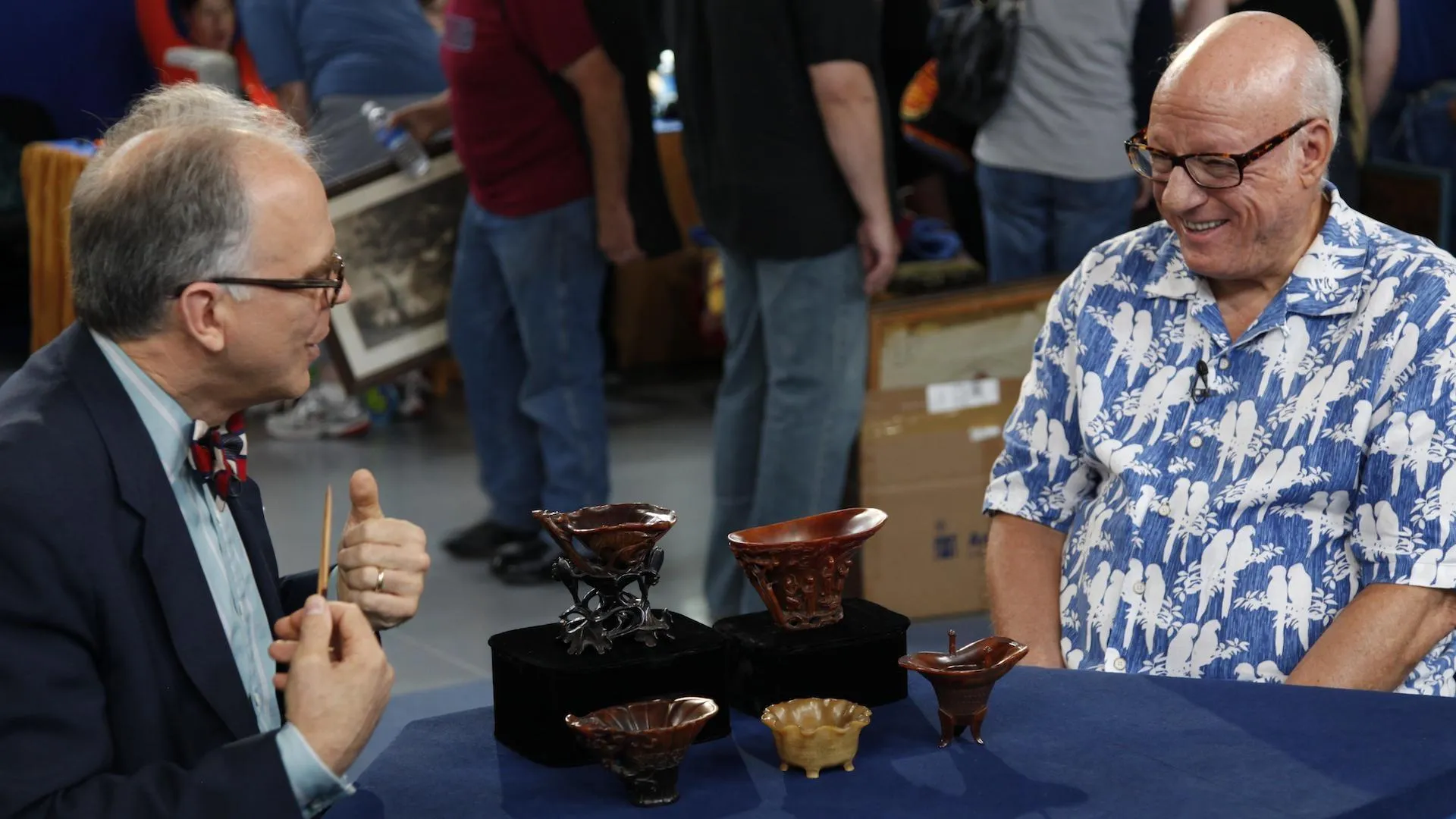GUEST: I bought these pieces in England, in Ramsgate about 20 years ago, early 1990.
APPRAISER: Okay, what took you to Ram... Ramsgate is right in the southeast corner of England.
GUEST: I was there on vacation.
APPRAISER: Oh, yeah?
GUEST: And I remember the antique shop was right off the train platform. So I kind of wandered through there. And what caught my eye is the red color. I liked the red color, and the shop owner said they were Doulton and said that they were good pieces.
APPRAISER: This was 20 years ago, then, you were there... about. And how much did you pay for them then?
GUEST: I remember on this piece it was around $180 and most of the pieces probably were similar to that. He really reassured me that they were good pieces, so I trusted him.
APPRAISER: Well, I think he was right. They are good pieces. They are, as you say, Royal Doulton. There are two different types of ware here. As you can see, the smaller vases are a little different from the large ones. Let's start with these. This is what Doulton called their Chang Ware. And it's identified on the bottom. I'm just going to flip it over. And all three of the bigger vases have a version of this mark: Chang-- a big "C" and then "h-a-n-g," and then Royal Doulton painted on. And they were designed under the direction of Charles Noke, whose name is up here also, as it appears on all Chang Ware. And Doulton called these flambe work. They're very high fired, very colorful glazes. And Noke, in his early days at Doulton, worked with Bernard Moore, the famous British potter, who had pioneered and developed the use of this type of glaze in Britain. And these types of ware were the result of Noke's collaboration with Bernard Moore and others. They're fabulous work. And quite difficult to achieve, which is one reason they didn't make a great many of them. Though they made a little more of this kind of ware. This was called Sung Ware by Doulton. And you can see the Sung mark on here, also made under the direction of, or the designs of, Charles Noke. And Sung work actually predates Chang by a few years. All of these were probably made in the 1920s. But I suspect the two Sung vases were made about 1920 or 21, and these were made perhaps in the mid or the later '20s. Which piece do you like the best?
GUEST: The parrot.
APPRAISER: The parrot, yeah, it's fabulous. I like it very much, too. The piece closest to you with a wooden base and cover-- which I think are original to the piece, by the way, and work very well with it-- I suspect at auction it would bring at least $3,000 today, or maybe $5,000. I think the large one in the middle, just not quite as complex or interesting in form, might bring a little less, despite its size. I would say between $2,000 and $4,000. But I think this one, which is also more conventional, but has the effects that people like, would bring about $3,000 to $4,000. The Sung pieces are actually doing quite well at auction too. They're both great ones. They have more color than many, and I would say $1,500 to $2,000 for the one closest to me, and the same for the one with the parrot that you like.
GUEST: That's wonderful.



